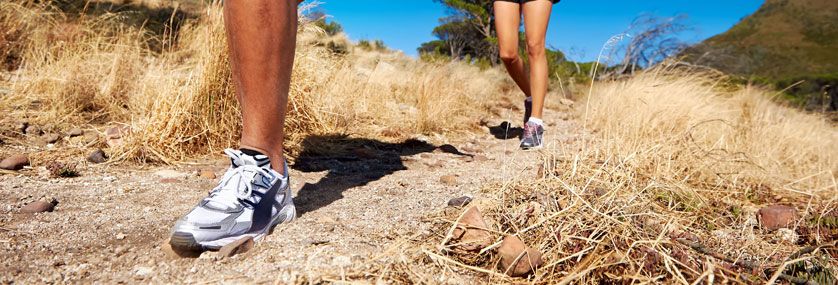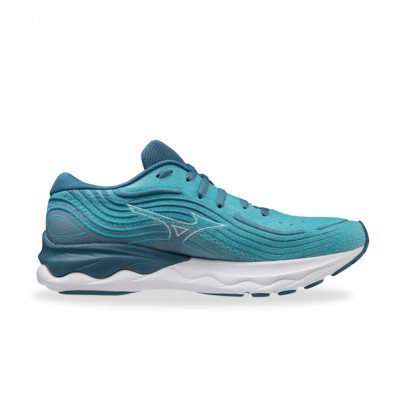Play on the ground

Descending can become torture or a fun game. It depends on how you take it or on your preparation.
It is necessary to adapt our race to the difficulties of the terrain, taking controlled risks and not hurting ourselves in the attempt.
Ideally, we should have our downhill technique under control to ensure our safety and to be able to enjoy or gain precious time in competition. This implies doing specific downhill sessions in training, to condition our musculature to the requirements of downhill (eccentric work) and to broaden our range of movements, response and adaptation to the terrain.
We will include long, fast descents in which the pace is high and we let ourselves be carried at high speed during long descents.
We must also train those sections that are more difficult (rock, crests, canyons, loose rocks, etc.) where technical gestures, agility, confidence and control will be fundamental.
Take your time at the beginning so as not to hurt yourself, work your muscles, choose the right footwear for your needs and enjoy playing with the terrain, overcoming obstacles and giving an art to your running.
Anticipate the terrain
Little by little your vision of the terrain and speed of response will improve, which will allow you to descend faster and safer. With experience and training, you will be able to decipher the necessary movements, looking for or intuiting the ideal places for each step.
At first your vision will be reduced to a short distance, but gradually this focus will increase until it becomes a wide-angle lens with which you can detect the details of the terrain from several meters away to adjust your run and find the ideal sequence during the descent.
This focus will allow you to combine different types of paces, which together with your proprioceptive ability and confidence, will guarantee a safe descent at high speed. It is advisable to give your joints and muscles time to get used to downhill and technical terrain, in addition to making a correct preparation in these two aspects (muscle conditioning and proprioception) in order to avoid injuries that stop our training.
Adaptation
Experience is also worth a degree and adapting properly to all terrains takes time. If you want to be a complete runner, mastering downhill is essential.
Train on all types of terrain (rock, grass, dirt, sand, snow...) and in different conditions (wet, muddy, dry, broken, cold, hot, windy), day and night with a headlamp.

Running at night gives you a different perspective. Your senses adjust to the lack of light and your focus is reduced to what your headlamp illuminates. Set your headlamp to maximum on downhills and save energy on those when it is not as necessary, for example on uphills.
Running in the snow involves preparing specific equipment, among which we can highlight: sunglasses, poles, cushioned shoes and crampons. There are specific crampons on the market that can be adapted to any type of shoe. Both poles and crampons can be essential when descending in snow.
Mountain runners play by adapting their footing to the characteristics of the terrain. In general, try to land with the front-middle part of the shoe, avoiding continuous impact with the heels, which can cause joint injuries.
On downhill runs with little slope and without difficulties, the stride will be wide and the contact with the ground will be brief, allowing you to run at high speed. In these terrains we will appreciate a low profile and light shoe that gives us a high sensitivity and response to the terrain, always taking into account the experience as a runner.
On steep descents the stride will logically be shortened so as not to impact excessively hard with each step and to balance the muscular wear of retention. It will be necessary to find a balance between moving forward as fast and agile as possible while maintaining a tight braking, without overloading the lower body.
On very technical descents where even running becomes difficult, each rider will assess his or her experience and ability. In general, we will especially look for the most suitable place to make contact, as firm and safe as possible. It will be a game of balance and agility that will allow you to easily overcome these sections.

Don't forget to breathe
Oddly enough, this is something we often forget. On the downhills, concentration is very high. You even forget to blink and your eyes get dry. Try to maintain a continuous breathing rhythm.
In very fast descents your breathing will not be as choppy as in very complicated descents. In the latter, in order to get out of some complicated sections, we cut the breathing rhythm and this leads to the appearance of flatus or discomfort. It is advisable to adjust your breathing rhythm to the race with short but continuous breaths.
Remember your breathing as you descend. You will maintain proper oxygenation to manage the rest of the race.
Arms also help on the way down
Just as on the climbs the arms help significantly in the momentum, during the descents the arms especially facilitate balance. Opening the arms helps to turn at high speed without losing the rhythm as well as to raise them in jumps or steep slopes.
In forest areas they will allow to remove possible branches that impact with our body or even to throw the hands to the ground in areas with big rocks to lower the center of gravity and to save the step.
The trunk should be leaned slightly forward so as not to overload the lumbar area and to help the landing with the front-middle part of the shoe.
Read more news about: Running Training






















